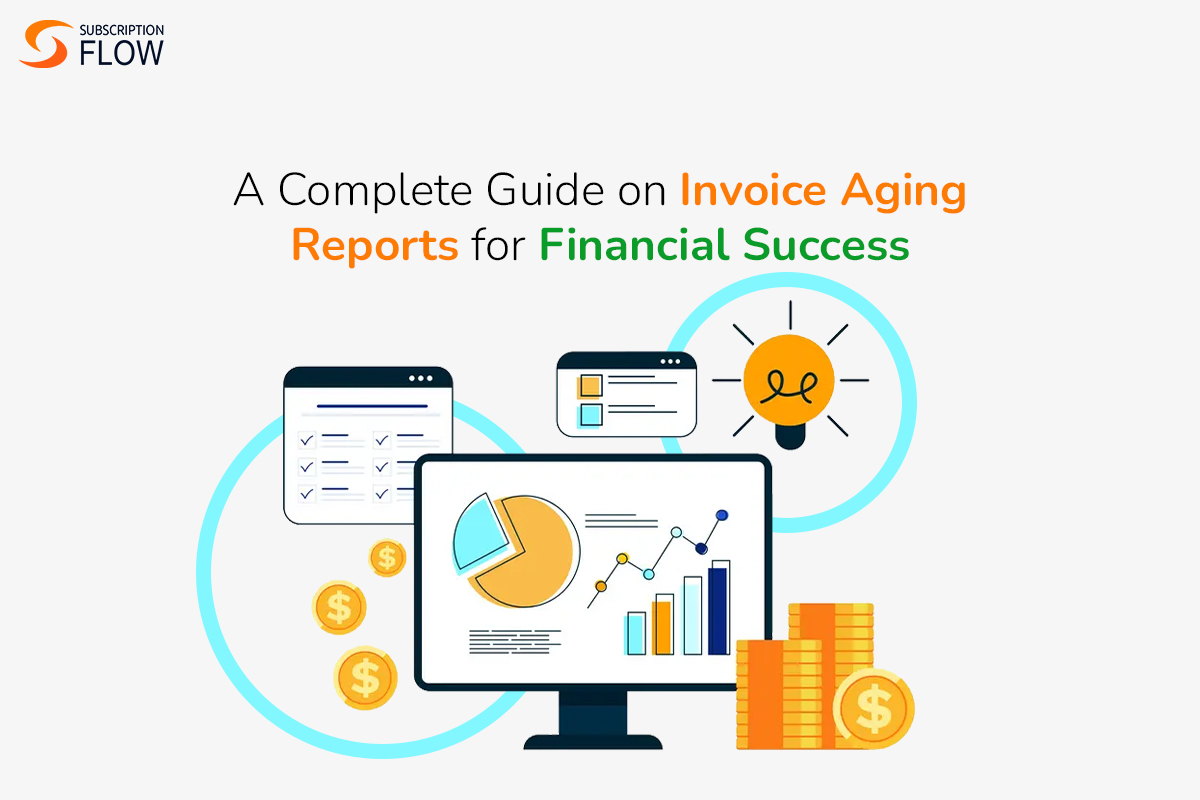
A Complete Guide on Invoice Aging Reports for Financial Success
Are you curious about what invoice aging reports are and what purpose they serve?
Perhaps you are already convinced of the importance of this invaluable collections tool but are confused about how to go about preparing these reports as part of best financial management practices.
This article serves as a comprehensive guide on effective collection through invoice aging reports, all the ways in which these reports can be leveraged for financial success, and a straight forward explanation of how to go about preparing them.
What is an Invoice Aging Report?
This is a report that categorically tracks all the unpaid or open invoices against the duration of outstanding charges. This sheds light on what your business is owed by customers with unpaid dues and helps you effectively recover these payments.
On a fundamental level, this report lends visibility to the collections process letting you know who you need to follow up with. But beyond just this, your accounts receivable aging reports also help your business identify bad credit risks, discover issues in your collection strategy, and create workable budgets based on financial reliability.
Let’s explore how these reports can be put to work.
How an AR Aging Report Contribute to Financial Success?
The following are some of the ways this report type can be used to fuel business success:
1. Guides Payments Collection
You can’t run a business without getting paid. Invoice aging reports enable you to stay on top of your billing and collection processes and plug any revenue leaks that may be eating away at your bottom line. The report facilitates payment recovery and hints at the odds of success based on the duration of outstanding charges. To lend an unsettling analogy, the odds of collection success are similar to the odds of finding a missing person – as more and more time elapses since the event, the likelihood of a positive outcome also diminishes.
2. Identifies Bad Credit Risks Early On
This valuable information can be incorporated into your overall accounts receivable process, specifically by defining the allowance reserved by your company to account for the possibility of customers defaulting on their outstanding debts.
Moreover, by collecting data on the time thresholds beyond which the likelihood of payment recovery diminishes to zero, this report assists in the early identification of potential bad credit risks, allowing you to proactively avoid them.
3. Helps You Assess and Revise Your Credit Policies
AR aging reports serve the vital function of identifying accounts that repeatedly have outstanding charges. This helps you identify problem customers and intervene with the necessary measures that might be as simple as incentivizing timely payment or sending out more reminders.
Having said that, if you notice multiple clients with repeated late payments, you may be dealing with a credit policy issue.
Credit policy refers to a set of guidelines that govern the extension of credit to customers and outlines the terms and conditions under which credit is granted, including credit limits, payment terms, and any applicable fees or penalties.
If your accounts receivable aging reports are showing plenty of leaks it might be time to consider revising your credit risk and policy to match industry standards as you may be taking too much risk.
4. Identify the Effectiveness of Collection Functions
If the outstanding dues aging report shows most late invoices clocking over 60 to 90 days, that shows a weakness in your collection strategy. As referenced earlier, the clock is ticking and the longer an invoice is not cleared the greater its threat of transforming into bad debt.
Regular checks on how your invoices are aging helps your business nip bad debt in the bud by taking proactive actions against them. SubscriptionFlow, with its real-time reporting places all overdue invoices on your dashboard for a high level of subscription lifecycle visibility. In this way, it can help streamline and maximize the success rate of your collections process. The easy and customizable reporting functionality also makes acquiring your invoice aging reports simple and convenient.
How to Prepare an AR Aging Report?
Simply put the AR aging report is a list of clients that owe your business money segmented into groups based on the time elapsed since the payment was due.
Typically, this segmentation may look like this:
- Current (just went overdue)
- 1 to 30 days due
- 31 to 60 days due
- 61 to 90 days due
- Over 120 days due
Automated reporting software can prepare this report for you with the click of a button. If you choose to do this manually, it’ll involve the following steps:
- Identify which of your invoices are unpaid.
- Categorize customers into groups based on invoice date or number.
- Create a list of customers with outstanding charges to place in the first column.
- List the amount overdue in one of the columns based on the amount of time elapsed since the payment was due.
Conclusion
In conclusion, this comprehensive guide has provided valuable insights into AR aging reports and their significance in effective collections management. Moreover, these reports contribute to financial success by identifying bad credit risks early on, assessing and revising credit policies, evaluating the effectiveness of collection functions, etc.
Preparing an accounts receivable aging report involves segmenting clients based on the time elapsed since payment was due, and automated reporting software can streamline this process. By regularly monitoring the aging of invoices and taking proactive actions against late payments, businesses can mitigate the risk of bad debts and optimize their collections process.
Leveraging the power of invoice aging reports, also allows businesses to enhance their financial management practices, strengthen customer relationships, and secure sustainable growth. Embracing this valuable tool is a key step towards achieving financial success and ensuring a healthy bottom line. Schedule a demo to learn more!










